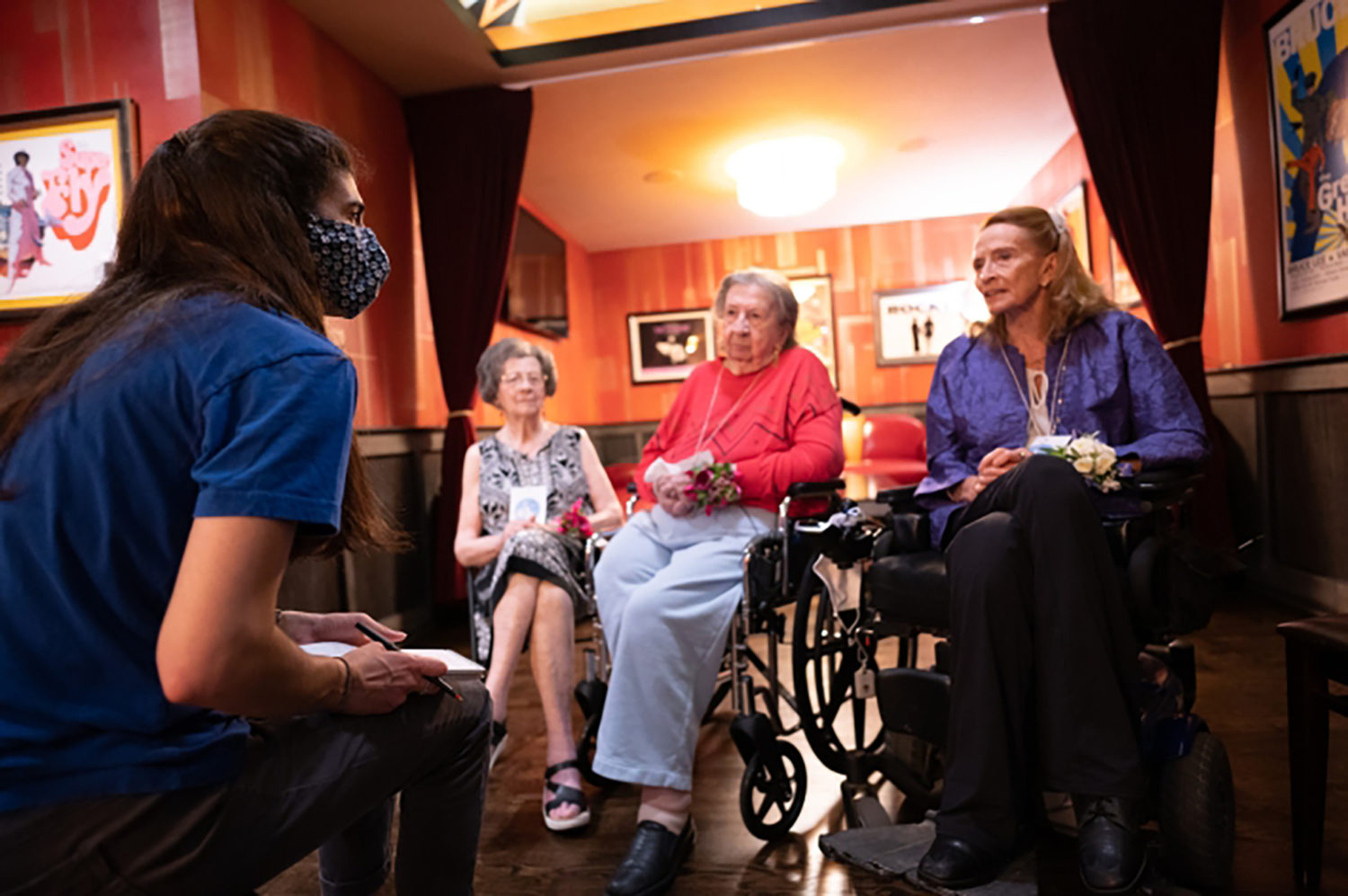This is an abridged version of an article on the Medill Local News Initiative website at Northwestern University.
Chicago journalism is undergoing a dramatic restructuring that has turned the nation’s third-largest media market into a center for news experimentation.
While the city’s media have seen brutal job cuts in recent years, including a dramatic downsizing at the Chicago Tribune, a sense of rebirth and optimism prevails. Longtime observers talk about “an explosion of media” that makes it “more exciting than it’s ever been.”
The changes are attracting national attention, said Sue Cross, CEO and executive director of the Institute for Nonprofit News. “It’s important nationally and perhaps even globally because Chicago is a petri dish for the re-invention of news media,” Cross said.
A variety of journalism trends intersect in Chicago.
Nonprofit news is assuming a prominence once reserved for the city’s commercial outlets as the 175-year-old Tribune recedes and a public radio station, WBEZ, emerges as a rival for dominance in local reporting.
WBEZ has not only grown on its own but is finalizing a merger with the Chicago Sun-Times that represents a creative attempt to save a legacy newspaper.
The Better Government Association, a nearly century-old organization that conducts journalistic investigations, is taking on a much bigger mission by teaming with the Robert R. McCormick Foundation on a new $10 million journalism effort called the Illinois Solutions Partnership. A key aim is to replace the government oversight lost in the downsizing of legacy news outlets.
And startups are becoming upstarts.
The digital nonprofit Block Club Chicago is attracting national attention for its fresh approach to neighborhood news. Block Club and scores of other small news outlets have banded together in a new Chicago Independent Media Alliance that is led by the Chicago Reader, an alt-weekly that once was a cash cow, then fell on hard times and now is being reinvented as a nonprofit.
The transformed landscape is head-spinning to some Chicago news veterans, such as David Greising, a former Tribune columnist who is the BGA’s president and CEO.
“I think a lot of us who are still in it are just thinking, ‘Wow, I can’t believe all this cool stuff is going on,’ when you think of where our heads were all at five years ago,” Greising said. “It’s quite something.”
(Disclosure: The author of this story is a former editor at the Tribune and Sun-Times and has done freelance work for the Chicago Reader and BGA.)
Block Club: Chicago is ‘not a hellscape’

Maxwell Evans, a South Side reporter for Block Club Chicago, conducts an interview. (Courtesy: Block Club Chicago)
In terms of scale, the two most significant examples of the rise of Chicago nonprofit journalism may be WBEZ’s planned merger with the Sun-Times and the BGA-McCormick partnership. But from the standpoint of inspiring optimism in the future of local news, perhaps the most encouraging nonprofit development is the emergence of Block Club Chicago.
It started with a dismal turn of events: TD Ameritrade founder Joe Ricketts’ decision in late 2017 to close Chicago’s DNAInfo digital news outlet and its sister publications in other cities after staffers in New York voted to unionize. DNAInfo Chicago had been a journalistic success, routinely outdoing bigger media on news stories. Among those left jobless by the closure were Shamus Toomey, Jen Sabella and Stephanie Lulay. Seven months later, they started Block Club Chicago to provide neighborhood news to Chicago, including in chronically underserved communities on the South and West sides.
Block Club’s formula isn’t entirely innovative, unless energy and quality are new concepts. INN’s Cross, who once worked for The Associated Press in Chicago, said Block Club’s success was “a little bit of a back-to-the-future thing.”
“If you cast back 30 years, maybe it would not feel as new because you still had a lot of neighborhood publications at that point,” Cross said. “… What I see as new with Block Club is them restoring it in a different way and really going out and talking to the public and focusing on a neighborhood-by-neighborhood level.”
Block Club’s level of responsiveness and listening sets it apart.
“That’s kind of our whole ethos,” Sabella said. “The way that the news was being done was not working, and people were clearly not getting out of it what they wanted. I never really (agreed with) the whole ‘advertising and the internet being the death of local news’ thing. I think that ‘the death of local news’ was when people stopped listening to the audience and listening to what readers wanted out of them.”
One example is Block Club’s COVID-19 hotline, started to answer callers’ questions about the pandemic. “After getting so much great feedback on it, we thought of other ways to be a public service vs. just a traditional newsroom,” Sabella said.
Block Club has also found ways to have fun, such as its Chance the Snapper campaign. The news outlet broke news in 2019 that an alligator was spotted in the Humboldt Park lagoon, then conducted a naming contest and sold Snapper shirts and totes in a $100,000-plus fundraising effort.
“The city has many problems and I think we all know that, but I don’t think everyone wants to hear about doom and gloom every day,” Sabella said. “There’s a reason people live here. It’s not a hellscape.”
Which is not to say Block Club is just “happy news.” Block Club’s Kelly Bauer broke a series of stories last year about Loretto Hospital’s mishandling of the COVID-19 vaccine, and later partnered with the BGA’s David Jackson to reveal more troubling actions at the hospital. The revelations have led to an FBI investigation.
While being relentlessly local, Block Club has gotten national attention In just the last three months, the startup was named Best Online-Only News source in an international competition hosted by Editor & Publisher and was honored as Publisher of the Year by the LION (Local Independent Online News) Publishers group.
When WBEZ met the Sun-Times
The general reaction in Chicago journalism circles to the WBEZ-Sun-Times merger was twofold:
I hope this works.
But how will it work?
With details still being hammered out, both WBEZ and the Sun-Times declined interviews for this story. WBEZ executives sat for an interview with the Medill Local News Initiative in October at which Matt Moog, CEO at the parent Chicago Public Media, said no layoffs were planned at either WBEZ or the Sun-Times and added that “we’re probably going to have in the neighborhood of 40 or 50 open positions that we need to fill” when the deal closes.
If the envisioned larger news operation indeed takes shape, it will represent an amazing development in which a once-sleepy but now surging public radio station and a newspaper that has long seemed close to the cliff combine to form a news shop that could be the most influential in the city.
“I think the Sun-Times-WBEZ combination and what’s been proposed, potentially, if it’s executed correctly, will be a national model,” said Jim Kirk, publisher and executive editor at Crain’s Chicago Business and a former top exec at the Sun-Times, Tribune Publishing and the Los Angeles Times.
With or without the Sun-Times, WBEZ has become a formidable player that regularly produces high-impact enterprise and exclusives on politics, education and race. Among its reporters are Dave McKinney and Dan Mihalopoulos, who broke major news in the biggest Illinois political story of recent years, the Commonwealth Edison bribery scandal. ComEd agreed to pay a $200 million fine for its scheme to lavish jobs and contracts on allies of longtime House Speaker Michael Madigan, who stepped down but has not been charged.
Another highly regarded WBEZ staffer is education reporter Sarah Karp, who came to the station with a huge scoop on her resume, an investigation for Catalyst Chicago that sent a Chicago Public Schools CEO to federal prison for bribery. Karp is now a key reporter to follow on the Chicago Teachers Union’s dispute with the school district over COVID-19 safety measures. WBEZ’s coverage of racial equity is also noteworthy and features reporter Natalie Moore, who has won praise for her book “The South Side: A Portrait of Chicago and American Segregation.”
WBEZ’s market position is unusual for a public station. It ranks No. 1 in Nielsen’s rankings for morning radio in Chicago, with anchor Mary Dixon doing local cut-ins to supplement programming from National Public Radio and the BBC.
The Sun-Times is bringing its own assets to the table, including investigative reporter Tim Novak, political writer Lynn Sweet, columnists Neil Steinberg and Mark Brown and perhaps the finest obituary writer in America, Maureen O’Donnell.
Robert Feder, a Chicago media columnist who had a long run with the Sun-Times, is hopeful about the merger.
“The concept, if successful, is fantastic,” Feder said. “They are poised to become the pre-eminent news organization in Chicago. To those of us who grew up here, that thought is unfathomable. The fact that the Sun-Times even survives the Tribune, let alone passes it in its influence and reporting heft, it’s mind-boggling.”
But a lot of merger details remain fuzzy.
“There are so many complicated questions — about paywalls, about contributions, about budgets, about unions,” Feder said. “How they mesh the demographics, how they mesh the print with the radio. The whole mindset of editors is different from broadcast to print. Who’s the final word, and who’s in charge? How do you avoid redundancies there? It’s so complicated.”
Philanthropy to the rescue
The changing role of foundations in journalism is being tested in Chicago.
The merged WBEZ-Sun-Times, for example, is expected to receive major funding from Sun-Times investor Michael Sacks, the MacArthur Foundation and the Pritzker Traubert Foundation.
Another example is the BGA’s work with the McCormick Foundation to create the Illinois Solutions Partnership. In this case, McCormick is not just writing checks but is also playing a leadership role. The partnership will be run by the BGA’s Greising with an eight-person board appointed in equal numbers by the BGA and McCormick. Tim Knight, president and CEO of McCormick, is a former President and CEO of Tribune Publishing and a former CEO of the Sun-Times’ holding company.
The $10 million over five years from McCormick will “make up for some of the decline of legacy media” by allowing Greising to double the number of journalists in his newsroom, he said. One area of emphasis will be statehouse reporting, which is “a huge crying need.” Greising also promised “a dedicated focus on solutions journalism in addition to traditional investigative reporting.”
As an example of solutions journalism, Greising cited a joint BGA-Tribune project called “The Failures Before the Fires,” by the BGA’s Madison Hopkins and the Tribune’s Cecilia Reyes. After reporting that 61 people had died in fires where Chicago officials previously had been warned of fire safety issues, the news outlets followed up with a look at how other major cities have enacted reforms.
While journalism advocates are enthusiastic about investments by foundations, it may not be a permanent solution.
“You can’t necessarily count on a foundation, even if it’s healthy, locally rooted, to fund the news forever,” said INN’s Cross. “But we’re very, very early in the public idea of supporting journalism, and journalism is brand new to most people who give donations and make philanthropic gifts as individuals. Individual donors are growing for news, and that is where there is long-term potential.”
Redefining the Tribune
Mitch Pugh, the Tribune’s new executive editor, comes to Chicago from The Post and Courier of Charleston, South Carolina, where his news outlet’s work on domestic violence won the 2015 Pulitzer Prize for Public Service.
Pugh, a native of downstate Illinois, knows he’s leading a Tribune that’s far different from the one his family read when he was growing up. The Alden Global Capital hedge fund, known for its draconian staff cuts, is in charge now.
Cook County lost more journalism jobs than any other U.S. county from 2007 to 2018, according to the book “News for the Rich, White, and Blue” by Nikki Usher. The Tribune is a prominent example of that trend.
“We don’t have 400 people in the newsroom anymore,” Pugh said. “We are going to have to make some changes.”
Pugh said the current news staff is “between the low 150s to 160 when we have everybody filled. And that’s a pretty good number. There’s still a hell of a lot of good we can do with that.”
Clearly, the Tribune must find a less ambitious but still important mission.
“From my perspective, we have to choose: What are the three to five things that the Chicago Tribune can do better than anybody else?” he said. “Marshal our resources around those things … and stop doing some of the things that everybody else is doing or that we can’t do as well as someone else.”
Among those areas of concentration, Pugh said, are watchdog reporting, sports, food and “aspects” of business, mainly consumer news.
A good example of the Tribune picking its spots was coverage in November of Illinois teenager Kyle Rittenhouse’s murder trial in Kenosha, Wisconsin. The Tribune deployed three of its finest reporters, Stacy St. Clair, Christy Gutowski and John Keilman, and its coverage was as strong as that of any news outlet in the country.
“We want to pick our moments and pick them correctly and then really plan accordingly and apply the right resources to those moments,” he said.
Pugh doesn’t think anyone should be writing an obituary for legacy news.
Other trends in Chicago:
- More collaboration. The Tribune works with ProPublica, which works with WBEZ, which works with BGA. And there’s a general feeling that a victory for one outlet is not a defeat for another. “We’ve always been a fiercely competitive news town,” said Laura Washington, a columnist at the Sun-Times and a political analyst at ABC-Channel 7. “I don’t think that’s changed. But now we don’t pretend that our colleagues don’t exist.
- No one-stop shopping. “The idea of one newsroom being the be-all-end-all is obsolete,” said Block Club’s Sabella. National networks are broadening the Chicago news scene. Axios now offers a Chicago newsletter. And then there’s ProPublica conducting investigations, Chalkbeat covering education and The Athletic writing about local sports
- No TV and radio transformation. Washington said local TV hasn’t been forced to change as much “because their business model … hasn’t been as threatened.” Local TV news often seems stuck in the past, with a broadcast audience that is dwindling and aging, Feder said: “Television itself has declined in most ways. It’s no longer necessary or important to catch news on TV, that’s for sure.” As for radio, Feder said, “The only serious player in the game, in my opinion, is ’BEZ.” He said news station WBBM-AM “is a shell of what it was even 10 years ago, let alone 20 or 30.”
- Black legacy losses. Chicago’s legendary Defender and Ebony and Jet magazines have fallen on hard times. A digital startup, The TRiiBE, is gaining attention. “They’re provocative, they’re smart,” Washington said. “They have a huge personality as far as being fearless about taking on taboo subjects and not parroting the party line.”
- Spanish-language slippage. Hispanic media in Chicago have not bounced back from the financial blows of recent years, according to Fernando Díaz, a lecturer at Northwestern University’s Medill School of Journalism, Media, Integrated Marketing Communications. “A lot of the small, for-profit, mom-and-pop publications have folded in the last five years,” said Díaz, who was managing editor of the Tribune’s now-defunct publication Hoy. “… All of the damage and all of the loss of jobs and loss of outlets that happened in English happened five times as fast in Spanish because it was already small to begin with.”







